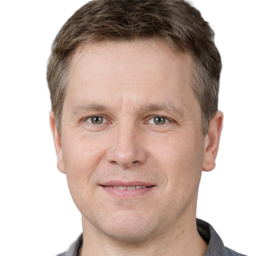This assessment will cover certain questions like:
- Evaluate and provide politics, culture, power within David & Co.
- Provide the motivation in the team goal and working.
- Give the ways in which the cooperation will undertake the management.
- Give appropriate philosophies with David & Co.
INTRODUCTION
Organisational behaviour is the relationship of individual within group or member of organisation. It is way in which people interact with team for effcient business running. It is study of human behaviour in firm between corporation and human being and predicting behaviour of individual (Contrafatto and Burns, 2013). The given assignment is based on A David & Co Limited incorporated in 1896 at Philadelphia, American. It is private food flavour Development Company. Here will discuss about organisation's culture, politics and power which influence individual and team behaviour and performance. There are content and process theories for motivating employees and along with motivational techniques. It has also discussed about effective and ineffective team with development theories for dynamic cooperation. The discussion is about concepts and philosophies of organisational behaviour which impact in positive and negative way.
TASK 1
P1 Organization's culture, politics and power influence individual and team behaviour and performance
Organisation Culture
It is defined as values, underling belief, way of interacting and assumptions which contribute for psychological and social environment of corporation. It includes experience, philosophy and expectation which guide member and expressed in interaction, self-image, inner working with outside and expectation of future.David & Co has used Handy's Topology theory for descrbing culture.
Handy's Topology Theory
This theory was given by Charles Handy in which four types of culture has been defined which are as below
Power Culture-
It means when power is held by few people in which they influence throughout organization and are authorized for taking decision (De Vasconcelos, Gouveia and Kimble, 2016). They enjoy special privileges in workplace. They are considered as important person and are decision maker. They can delegate duties and responsibilities to another staff. The worker cannot express view or ideas to other. As per David and Co requires such type of culture for decision making and influencing business.
Role Culture-
As per specialization, interest and educational qualification employee is given responsibilities and roles. In this staff gives their best and accept challenges. Every subordinate need to be accountable for the work assigned. The individual get power with responsibility (Hollebeek, 2013). David and Co assign work as per quality and skill of worker. It is medium organization so requires skilled employees for performing work.
Task Culture-
In order to solve problem or achieve targets teams are formed is called task culture. Here person with specialization and common interest collectively form team. It consists of more than four members in each team. Every member should contribute equally for completing task with innovative and creative way. David and Co need task culture for solving major or critical issues in an organization. It helps in getting many alternatives for particular problem though help of team.
Person Culture-
When employees consider themselves important for organisation is called person culture. They focus more on their own goal rather than business. The employees with such power comes office for money purpose. This common professional is lawyer and accountant and organisation has background, expertise and training. There is many staff in David and Co who is working for sake of money.
After analysing all types of culture, David & Co have to follow role. It is medim size organisation in which different work have to be performed. This culture helps in identifying individual with their specilisation and accordingly task is performed which helps in achieving goal and objective.
Organisational Politics
It is informal, unofficial that influence organisation for increasing power and achieve objectives. It is social influence which is either dysfunctional or functional which influence corporation and subordinates. It can be viewed in two ways: in terms of social influence symptom which benefit organisation and self-serving effect which goes against company goals. It has positive and negative impacts on firm. The advantage can be increasing productivity and profitability and achievement of goals. Similarly, the disadvantage is cost increment, lockout, strike, lay off and others (Huhtala and et. al., 2013).
Organisation Power
It is the way to influence other people and capacity for affecting behaviour of staff. It is relationship between target and agent. The agent uses power and target is receipt. There are five types of power followed by David & Co which is described below
Legitimate Power-
It is called positional power which derived through position possess by people in organisation structure (King, 2017). The best example of such power is job descriptions. The junior need to report their manager for work assigned and duties. David & Co need such power for effective and efficient running of business. Thus it also assists in individual team and performance for organisation.
Expert Power-
It derives through expertise and knowledge of particular field. This people have high value for solving problems and are expert for critical task. The decisions, opinions, ideas are more in such power. It is required in business for such task. David & Co need expert power for solving critical issues at corporation. Thus, it helps individual and team for achievement of results.
Referent Power-
It is taken from interpersonal relationship in organisation. Such power is possessing when other individual like and respect. For example people having such power can refer other for job which may be good or bad for corporation. Sometime wrong worker can be selected which gives negative output. David & Co also use such power which is not good for business goal achievement and success
Coercive Power-
It is the way to influence others by sanctions, threats and punishment. It helps in controlling behaviour of staff which ensures them to follow rules, policies and norms. David & Co also follow this power in order to complete their task within stipulated time. It assists team and individual to focus on company's goal.
Reward Power-
It is ability to influence people of an organisation for incentives. It can be in form of monetary and non- monetary terms. The incentives include promotions, increments and positive appraisals. It helps in motivating individual and team for performing work with dedication and achieve final goal. David & Co also require this power for staff to get them motivated towards work (Lee-Ross and Lashley, 2012).
After discussing all category of power, David & Co decided to apply legitimate. There are many departments whcih have different roles and responsibilities which need to be performed. Thus, power decide position according to department and accordingly performed.
TASK 2
P2 Content and process theories of motivation and motivational techniques
Motivation is people's action, goals and willingness. It is derived from motive which means satisfaction (Mclaggan, Botha and Bezuidenhout, 2013). It helps in achieving goal and objective. There are content and process theories of motivation which have followed by David & Co described below:
Content theories of Motivation
It means need which motivate people There are many content theories but David & Co has followed Maslow hierarchy need as it follows in step format. Every individual has want and need which should be fulfilled on timely which leads to motivation factors. This is important theory which is describes as per context of employees need.
Maslow Hierarchy Need Theory
It was developed by Maslow in 1943. It has higher and lower needs. It is divided into five categories which are described below
Physiological Needs-
It is the basic needs of human beings. It includes air, food, shelter, water. If all needs are unsatisfied then people cannot survive. It is dominant of all needs. It is most important of all needs for living a life. Every human being required such needs. David & Co also give their employees such needs for doing work and achievement of result. These needs are required by every individual. If such fulfils on time then employee is motivated for doing work in that organisation for longer period of time.
Safety and security Needs-
After fulfilment of basic needs the next arise is a safety and security need. Safety is security and protection of an individual. Every employee's needs safety environment for performing work. It includes source of income, live peace, protection at workplace. It also includes personal, financial, health and well-being safety, illness and impact. David & Co provide this need to worker for performing work and achieve goals and objectives (Onyishi and Ogbodo, 2012). It creates goodwill and image of company which leads motivation to staff. As every individual requires safe and healthy workplace for showing performance.
Belongings and love Needs-
After fulfilment of both needs next is belongings and love needs. Every people want to live in group and require love and to be loved. . Many employees feel loneliness, depression and social isolation which demotivate them to perform well. It includes social group, community, society, relationship. David & Co need to provide such comfort and peaceful environment for achieving result and maintaining standards. It is important needs of employees and employers.
Esteem Needs-
People want high valuation having self-respect and self-esteem. It means respected, appreciation and value. The employee with low self-esteem requires respect from others. Maslow divided this into lower version and higher version. It includes respect, recognition, and prestige in corporation (Rigtering and Weitzel, 2013). In context of David & Co should provide benefits on regular basis to promote worker for doing well.
Self- Actualization Needs-
It means when individual grow and develop fullest potential. In this people prefer to choose opportunities, challenges and creative task. It is described as needs which should accomplish everything and to become most. It includes desire to grow, potential. It is last level need of human being. Here people prefer to utilize their time with creativity. For example if employees of David & Co has fulfilled all above need then this need arise. The worker like to sing song so in this stage utilises full potential to become singer.
Process theories of Motivation
It is idea system which explains development and changes. It is described as relationship between independent and dependent variables. David & Co has explained Locke's goal setting theory in process motivation which is described below
Locke's goal setting theory
It was developed in 1990 by Locke's as a model of motivation. It focuses on setting specific, challenging goal, performance and commitment which are determinants for motivation. The goals are desired future and established goals leads to behaviour. After achieving goal, it results into accomplishments which motivate employees and staff for performing. Here goal is identified on basis of acceptance, specificity and difficulty. There are some guidelines for goal setting such as
Set challenging but attainable goals-
Neither too easy nor too difficult goals motivate employees.
Set specific and measurable goals-
There should be specific and measurable goal for company (Robbins and et. al., 2013).
Goal commitment should be obtained-
Without commitment goals cannot be achieved and effort cannot be put for achieving. It can be attained through goal setting process and encouragement. The pressure to worker cannot achieve this as it creates dishonesty and superficial performance.
Support elements should be provided-
The elements are material, moral support, encouragement and resources.
Knowledge of results is essential-
The goals should be measurable and feedback needed.
This theory is applicable in several fields. It has incorporated incentive programmes and management by objectives (MBO) tools at workplace. The feedback helps in improving performance of employees and staff. It is simple motivational techniques which has gained popular. David & Co should adopt such theory for improving performance of staff and attaining goal (Routledge Tangaraja and et. al., 2015).
Motivation Techniques-
The motivation leads to improve performance, productivity and raise morale. The different techniques of motivation are: positive work environment, set goals. Incentives. It also includes achievements, sharing of profits; employee input and provides professional enrichment. Such techniques assist individual to give their best at workplace and work hard for achieving final result or goals. It also increases goodwill and image of firm in the market. The final goal can be achieved efficiently and effectively.
TASK 3
P3 Making an effective team as opposed to an ineffective team
Effective team
A group of two or more people working together in an organization for common goal is called team. Effective team helps in increasing employee motivation and productivity of business. It helps in changing processes, improving quality and complete projects. The member of team have different talent and skill which contribute for success of business. The characteristics of effective team are: good communication, cleared goals, performance review and leadership.
Ineffective team
It means when team suffering from lack of purpose. The work ethic and efficiency decreases resulting in ineffective team. The missed deadlines, boredom, petty confrontations, negative signal are impacts of ineffective team. The identification of ineffectiveness helps in determining problem at workplace (Spagnoli and Caetano, 2012). The problems may be vary from each other. The characteristics are: lacking unity, disorganization, knowledge gap, no self analysis.
Differences between effective and ineffective team are:
|
Particulars |
Effective Team |
Ineffective Team |
|
Underlying goals |
It is accepted and understood by members. |
The member of team face difficult in understanding task and objective. |
|
Member Contributions |
Every member participate and lots of discussion. |
Only few dominate discussion. |
|
Listening |
The idea is heard and member listen each other. |
The idea ignored and not listen to each other. |
|
Conflict resolution |
Each member is comfortable and there is no conflict. |
The leader suppressed each member and there is conflict. |
|
Decision Making |
The members make decision collectively. |
The actions are taken before occurrence of real issues. |
|
Division of labour |
After action take assignments are accepted and made. |
The member are unaware about assignment. |
Tuckman Theory
This theory was developed in 1965 for effective team building (Tuckman forming storming norming performing model. 2017). It is the relationship between group and task. There are five stages of group development which is described below:
Forming-
A new team is formed with motive to learn and meet opportunities and challenges. They agree on same goals and tackle assigned task. The team members are independent and are motivated. There is orientation for understanding the matter. The leader provide guidance and direction (West and Lyubovnikova, 2013).
Storming-
It is second stage in which group gain trust and sort out. It is according to position period in particular field within group. Some member who seek and compete for influence, status, authority and control. There is rise in arguments and disagreement but in end roles are allocated. As it is most uncomfortable phase for team member or group.
Norming-
In this phase, moving towards harmonious practices and agreeing on same rules and values in which organization operate. All member have to trust each other for equal contribution (Wood and et. al., 2012). The individual have to take greater responsibility as leaders can take their step back. There is more risk in this step.
Performing-
In this stage team react as functions and task will be benefited by group. The members know their role and work together for goals and objective. Each member know about objective and support. The working environment is good and cooperation is very clear. The functions are performed excellently and decision making is independent.
Adjourning-
After completion of task team is dissolved. The team member feel anxiety and maintain distance from each other as they have to quit group. The organisation need to conduct farewell party for them. In this the assigned task at David & Co is complete by following each and every step and achieve goal and objectives.
TASK 4
P4 Concepts and philosophies of organisational behaviour
Concept of organisational behaviour
It is the way in which people interact within groups and organisation. It is applied for creating efficient business, management and workers. It is used for human resources for maximizing output through help of group and individual. It is studied of human behaviour in corporation. It is categorised in three ways including individual, work group and behaviour of organisation. The main goal is to revitalize theory and developing better conceptualization of firm life (Contrafatto and Burns, 2013).
Philosophies of organisational behaviour
Path goal leadership
This theory first introduced by Martin Evans in 1970 and further developed by House in 1971. It is based on finding leader's style or behviour which fit work place and employee for achieving goal. The purpose is to creat satisfaction, increasing worker motivation and empowerment for becoming productive members. It focus on three steps such as:
Employee Characteristics-
It is the characteristics of employees which includes experience, ability and locus of control. The staff need leader behaviour based on needs, affiliation, structure. In order to motivate staff, leader should understand their employees.
Task and environmental characteristics-
This theory mainly focus overcoming obstacles and accordingly select employees for solving out. The task characteristics are
-
Design of task-
It means support of leaders. Example in case of difficult task superior should assist subordinates for act. David & Co also requires such leaders for solving problems of workers (De Vasconcelos, Gouveia and Kimble, 2016).
-
Formal authority system-
As per the task, leader need to provide goals, direction and control for employees. It is formal authority which is followed in step. David & Co is medium corporation so as per position of leader staff should take help.
-
Work group-
In case of non supportive of team, leader have to motivate and enthusiasm to all members. As group work can be achieved effectively and efficiently. Every member should focus on copmpany's goal rather than their own.
Leader behaviour or style-
There are two type of factors which study behaviour and four types of leadership style described below:
Factors of study behavior
-
Consideration-
It includes trust and respect
-
Initiating structure-
It is task behaviour including organising, scheduling and viewing
Leadership style
Directive-
The leader inform about work to their follower and direct them to follow. It is helpful when people are unaware of task and environment uncertainity. David & Co also apply this style in company for guiding their staff and working on it.
Supportive-
The working environment must be approachable and friendly for workers. It is effective when tasks and relationships are psychologically and physically challenging.
Participative-
The leader should take help from their follower before making any decisions. When subordinate are involved and trained in work then it is effective.
Achievement-
The challenging goals are set for follower by leaders and expecting them to perform with ability and confidence and meet expectation. It is effective in teachnical, scientific, sales and achievements (Hollebeek, 2013).
Apart from this there are other behaviuors such as:
- work facilitation
- work group networking and representation
- group orientation decision process
- value based.
Emotional Intelligence
This theory was given by Daniel Golemann in 2002 which has presented four elements including:
Self awareness-
It is the first element which is creating awareness among self. It is self confidence which is divided into two parts such as: emotional self awareness and accurate self assessment.
Self management-
It means controlling of self from things to be done. It is self control which has five measure things such as trusthworthiness, adaptability, initiative, conscientiousness, drive and motivation.
Social awareness-
It means ability of leader for understanding emotions of member team and getting comprehension of emotional makeup. According to emotional people should be treated. The are of social awareness is empathy which is divided into organisational and understanding environment.
Social skills-
The leader having social skills are good communicators and with discipline are conflict resolution, communicating vision, motivating staff and enlightening them. The leader support their team and believe in leadership. The area is influencing which includes inspirational leadership, building bonds, developing others and team work and collaboration.
David & Co have to follow all the types of elements of emotional intelligence. Firstly, organisation need to do self awareness about market and its competitior for profitability and productability and do managing all such activities for effective results. After awareness and managment third is social awareness. This means creating awareness in society about products and services. The last step is developing skills for solving problems and issues and getting best results (Huhtala and et. al., 2013).
Get Online Essay Help from our Experts.
CONCLUSION
From this assignment it is concluded that David & Co role culture, politics and legitimate power for influencing individual and team behaviour and performance. The chosen comapny has followed Maslow's hierarchy content theory and Locke's goal setting process theory for motivating their worker and staff for achieving goal of an organisation. There are motivational technniques applied for enabling effective achievement. The effective team focus on goal achieving and ineffective focus on conflict and issues. Tuckman thoery has explained for performing group assigned task. This report has followed path goal and emotional intelligence leadership theory for leader and completing of task. This both theory explained about behaviours of an individual for assigned task.



 Company
Company


















